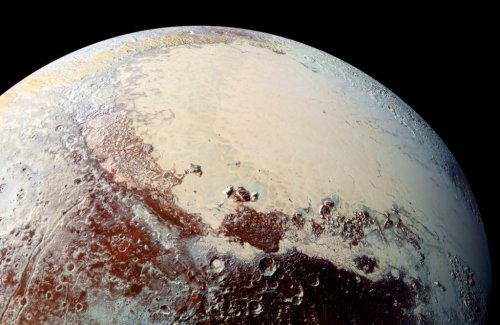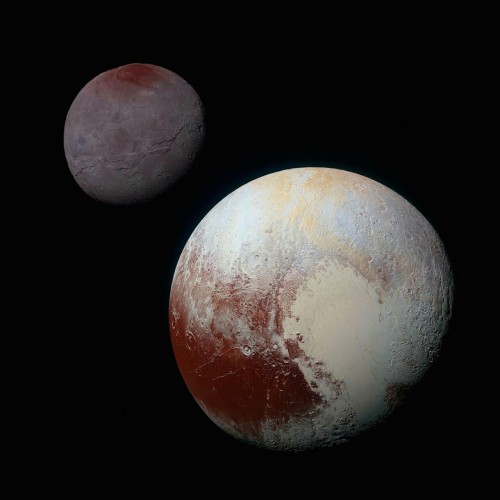Sorry Guys I Don’t Really Post On Here Anymore. I Want To Say An Extremely Late Happy Birthday To The
sorry guys I don’t really post on here anymore. I want to say an extremely late happy birthday to the Curiosity Rover and that I’ll try to post more in the future
More Posts from Curiositytherover and Others

Liquid-metal terminators are generally something to be afraid of – but what if the substance was used to fight cancer instead of wiping out humanity?
That’s exactly what researchers in the US are working on, having developed a biodegradable liquid metal that can be used as a drug delivery technique to target cancer cells.
“The advance here is that we have a drug-delivery technique that may enhance the effectiveness of the drugs being delivered, can help doctors locate tumours, can be produced in bulk, and appears to be wholly biodegradable with very low toxicity,” said Zhen Gu, a biomedical engineer in a joint program at North Carolina’s State University and University at Chapel Hill. “And one of the advantages of this technique is that these liquid metal drug carriers – or ‘nano-terminators’ – are very easy to make.”
Continue Reading.

The 7th Row of the Periodic Table is Finally Complete
And with a single announcement, millions of text books around the world have been made incomplete—out of date. This comes as four new elements are added to the periodic table, finally completing the table’s seventh row. The elements, 113, 115, 117, and 118 were discovered by scientists working in Japan, Russia, and America. Now, the International Union of Pure and Applied Chemistry (IUPAC, the body that is charged with overseeing standards in the world of chemistry) has confirmed the finds. Ultimately, these are the first elements to be added to the table since 2011. They were verified in an announcement released on Dec. 30.
Learn more: http://futurism.com/links/the-7th-row-of-periodic-table-is-finally-complete/

The New York City Department of Consumer Affairs compared nearly 800 products with female and male versions — meaning they were practically identical except for the gender-specific packaging — and uncovered a persistent surcharge for one of the sexes. Controlling for quality, items marketed to girls and women cost an average 7 percent more than similar products aimed at boys and men.
"Is There A Santa Claus?-A Physicist View" SPY MAGAZINE Jan. 1990
Consider the following:
1) No known species of reindeer can fly. But there are 300,000 species of living organisms yet to be classified, and while most of these are insects and germs, this does not COMPLETELY rule out flying reindeer which only Santa has ever seen.
2) There are 2 billion children (persons under 18) in the world. BUT since Santa doesn’t (appear) to handle the Muslim, Hindu, Jewish and Buddhist children, that reduces the workload to 15% of the total - 378 million according to Population Reference Bureau. At an average (census) rate of 3.5 children per household, that’s 91.8 million homes. One presumes there’s at least one good child in each.
3) Santa has 31 hours of Christmas to work with, thanks to the different time zones and the rotation of the earth, assuming he travels east to west (which seems logical).
This works out to 822.6 visits per second. This is to say that for each Christian household with good children, Santa has 1/1000th of a second to park, hop out of the sleigh, jump down the chimney, fill the stockings, distribute the remaining presents under the tree, eat whatever snacks have been left, get back up the chimney, get back into the sleigh and move on to the next house.
Assuming that each of these 91.8 million stops are evenly distributed around the earth (which, of course, we know to be false but for the purposes of our calculations we will accept), we are now talking about .78 miles per household, a total trip of 75-½ million miles, not counting stops to do what most of us must do at least once every 31 hours, plus feeding and etc.
This means that Santa’s sleigh is moving at 650 miles per second, 3,000 times the speed of sound. For purposes of comparison, the fastest man- made vehicle on earth, the Ulysses space probe, moves at a poky 27.4 miles per second - a conventional reindeer can run, tops, 15 miles per hour.
4) The payload on the sleigh adds another interesting element. Assuming that each child gets nothing more than a medium-sized lego set (2 pounds), the sleigh is carrying 321,300 tons, not counting Santa, who is invariably described as overweight.
On land, conventional reindeer can pull no more than 300 pounds. Even granting that ‘flying reindeer’ (see point #1) could pull TEN TIMES the normal amount, we cannot do the job with eight, or even nine.
We need 214,200 reindeer. This increases the payload - not even counting the weight of the sleigh - to 353,430 tons. Again, for comparison - this is four times the weight of the Queen Elizabeth.
5) 353,000 tons traveling at 650 miles per second creates enormous air resistance - this will heat the reindeer up in the same fashion as spacecraft re-entering the earth’s atmosphere. The lead pair of reindeer will absorb 14.3 QUINTILLION joules of energy. Per second. Each.
In short, they will burst into flame almost instantaneously, exposing the reindeer behind them, and create deafening sonic booms in their wake. The entire reindeer team will be vaporized within 4.26 thousandths of a second.
Santa, meanwhile, will be subjected to centrifugal forces 17,500.06 times greater than gravity. A 250-pound Santa (which seems ludicrously slim) would be pinned to the back of his sleigh by 4,315,015 pounds of force.> In conclusion - If Santa ever DID deliver presents on Christmas Eve, he’s dead now.
(NOTE: This appeared in the SPY Magazine (January, 1990) )









If Our Universe Is So Old and Vast, Then Where Are All the Aliens?
Read more at: http://futurism.com/images/ http://futurism.com/images/if-our-universe-is-so-old-and-vast-then-where-are-all-the-aliens/


latest photos of Pluto and it’s moon.
Black (Hole) Friday!
It’s Black Friday, but for us, it’s the 3rd annual Black Hole Friday! Today, we’ll post awesome images and information about black holes.

A black hole is a place in space where gravity pulls so much that even light cannot get out. The gravity is so strong because matter has been squeezed into a tiny space…sort of like all of those shoppers trying to fit into the department stores today.
Because no light can get out, people can’t see black holes. They are invisible. Space telescopes with special tools can help find black holes (sort of how those websites help you find shopping deals).

How big are black holes? Black holes can be big or small…just like the lines in all of the stores today. Scientists think the smallest black holes are as small as just one atom. These black holes are very tiny but have the mass of a large mountain! Mass is the amount of matter, or “stuff”, in an object.

So how do black holes form? Scientists think the smallest black holes formed when the universe began. Stellar black holes are made when the center of a very big star falls upon itself, or collapses. When this happens, it causes a supernova. A supernova is an exploding star that blasts part of the star into space. Scientists think supermassive black holes were made at the same time as the galaxy they are in.
For more fun facts and information about black holes, be sure to follow us on social media.

You’ve gotta see it in action.


Flowers could be blooming on the International Space Station after the New Year
Having already grown lettuce (images above) on the International Space Station, astronauts are now attempting to grow the first flowering plants. On 16th November, NASA astronaut Kjell Lindgren activated the plant growth system named Veggie and its rooting “pillows” containing Zinnia seeds.
“Growing a flowering crop is more challenging than growing a vegetative crop such as lettuce,” said Gioia Massa, NASA Kennedy Space Center payload scientist for Veggie. “Lighting and other environmental parameters are more critical.”
Lindgren will turn on the red, blue and green LED lights, activate the water and nutrient system to Veggie, and monitor the plant growth. The experimental flowers are expected to bloom early 2016, after 60 days of growth.
“Growing the Zinnia plants will help advance our knowledge of how plants flower in the Veggie growth system, and will enable fruiting plants like tomatoes to be grown and eaten in space using Veggie as the in-orbit garden,” said Trent Smith, Veggie program manager at Kennedy. Growing tomato plants on the space station is planned for 2017.
Image credit: NASA/Gioia Massa


There’s finally a Tesla that’s priced like a normal car
Follow @the-future-now